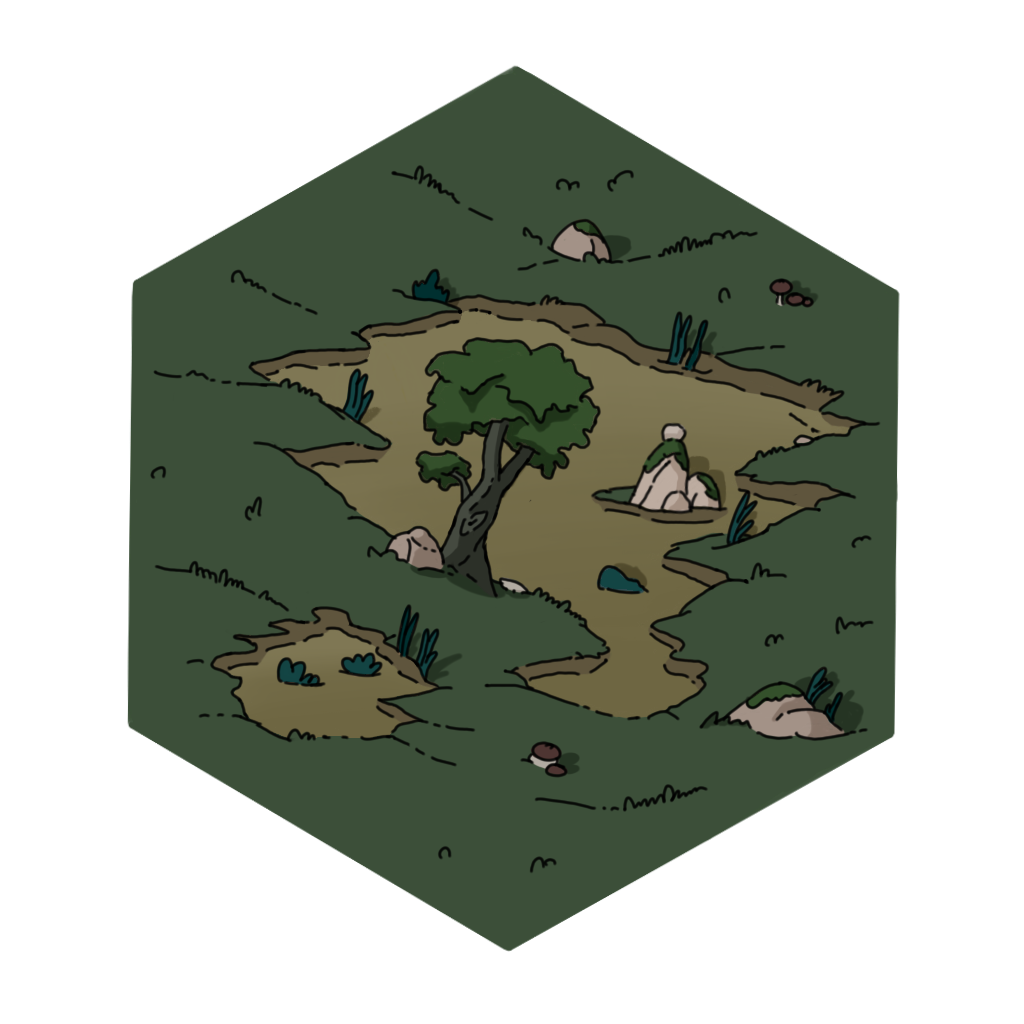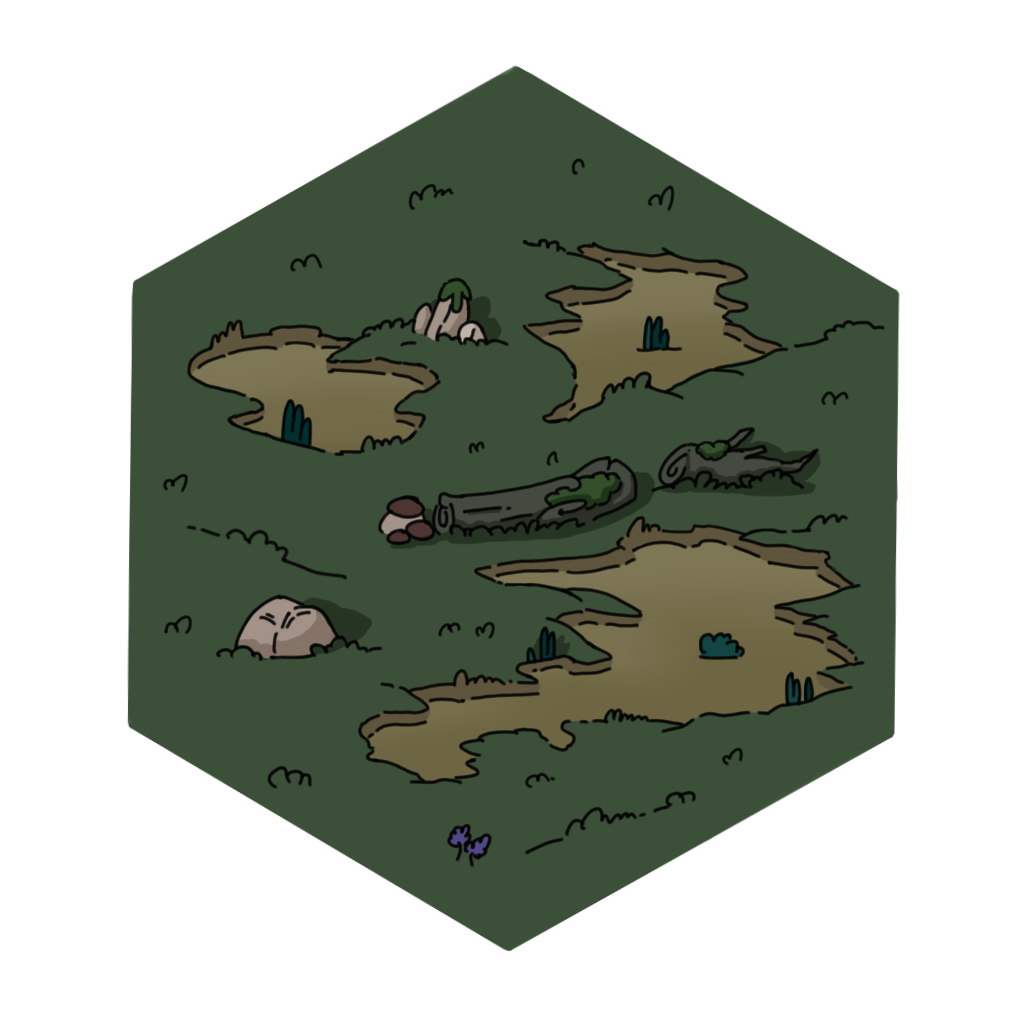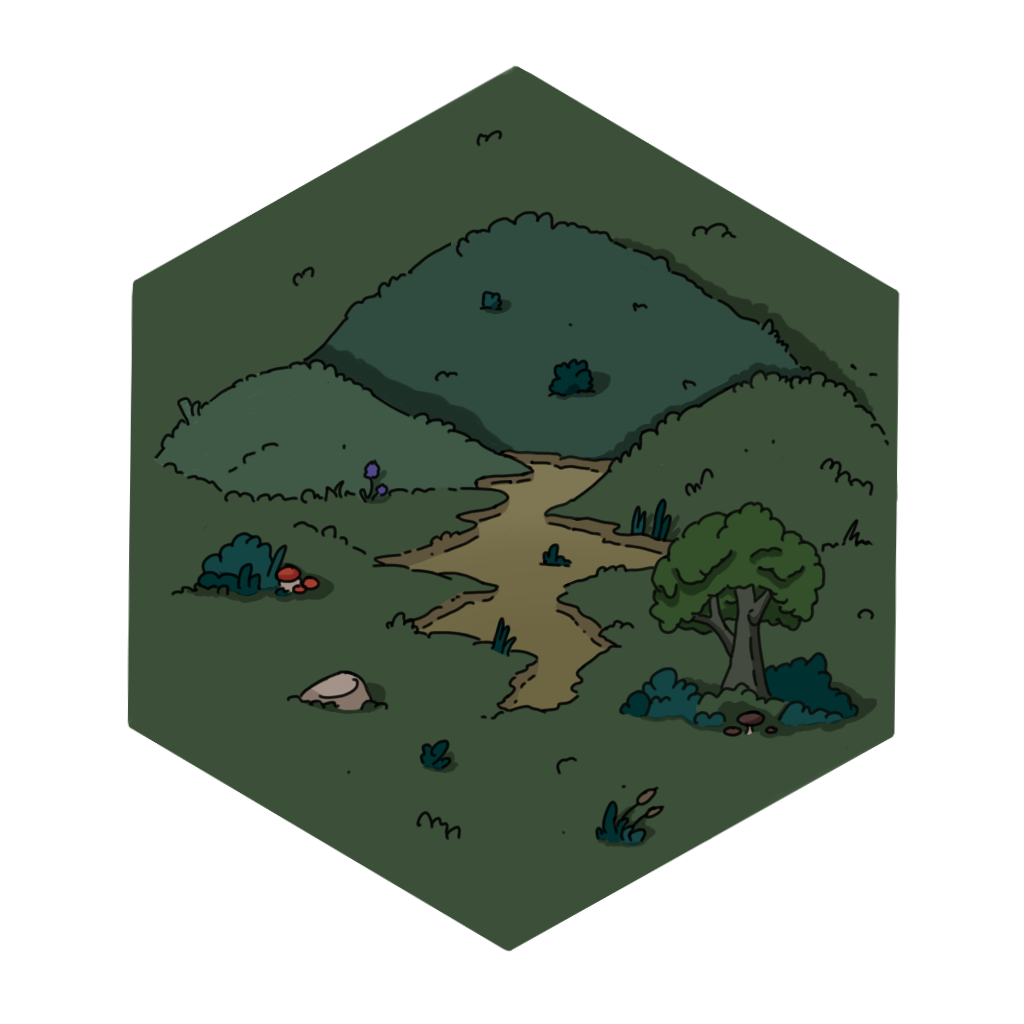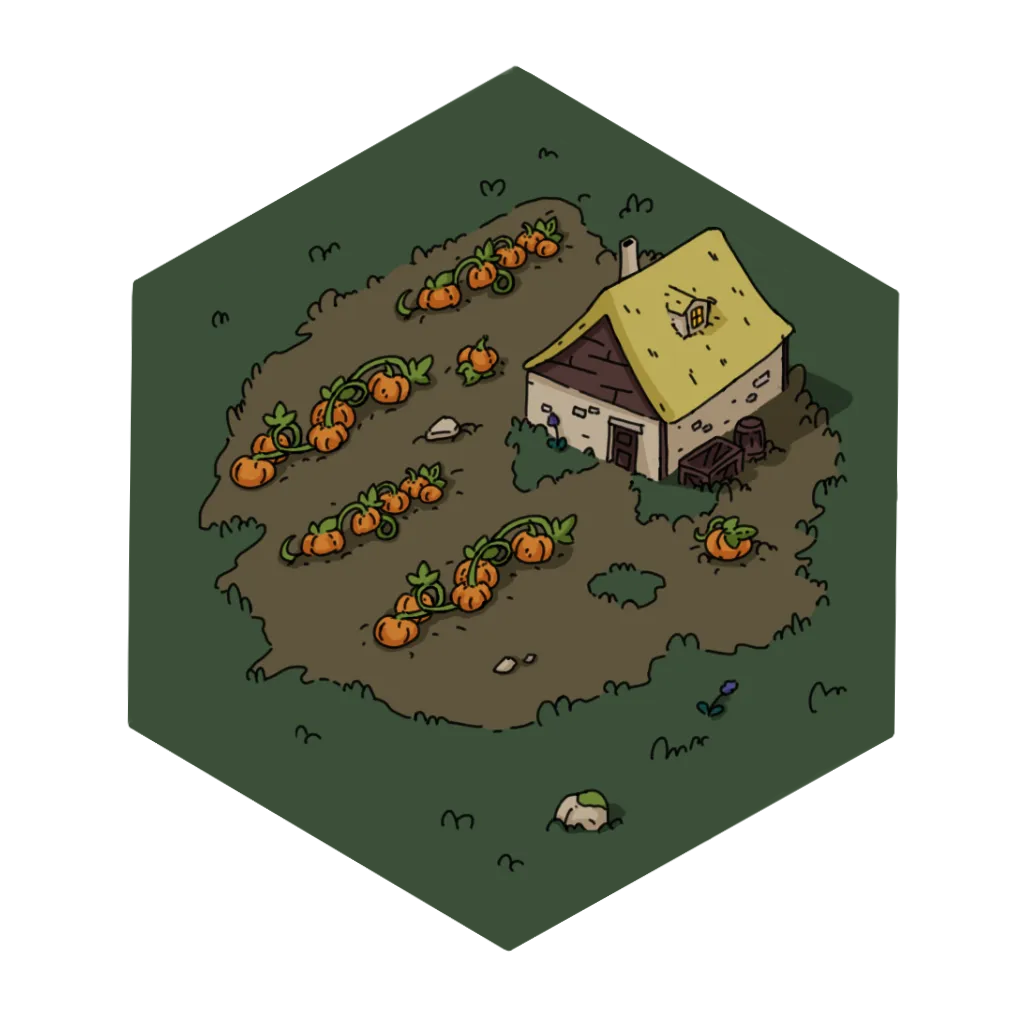Heximperium - Devblog
I’m a game designer (currently between jobs) working solo on a small, experimental strategy game inspired by the 4X genre. This blog is where I’ll share progress, design thoughts, and development challenges as I build the game from scratch. Let’s see where it goes!
11/06/2025
Refining the core
Hey!
I recently showed the prototype to a good friend of mine. Just one for now, his feedback matched mine almost perfectly, and I want to keep my other playtesters fresh for the next iteration. Also, to be honest, I already had plenty of leads to work on.
Feedback Summary
He was really happy to see the project taking shape, especially since he’s not into 4X games at all, which makes his perspective super valuable. Here’s what came out of it:
Scouting is fun, but way too many tiles get revealed too fast. It needs to be rebalanced so exploration stays meaningful across the whole game.
Expand and Exploit phases are solid, but he skipped over a lot of building options. Watching him confirmed what I suspected, there’s just too much to pick from at once. The pacing of content needs to be streamlined.
Entertainment phase is confusing. The two-layer system felt clunky. He suggested making it a single, unique phase at the end of the game. I really liked that idea, it gives the game a satisfying rhythm: build, grow… then celebrate.
He also reassured me that I’m heading in a direction that could really become something special. That felt good to hear.
Design Overhaul
After sleeping on it for the weekend, I jumped back into the GDD and started reshaping the design. Here’s what’s changed:
Scouting
Scouts are now free, but limited (starting with just 1).
Their stats are nerfed to slow down tile reveal.
Claiming a tile no longer reveals adjacent ones, keeping exploration meaningful and aligned with the new pacing.
Infrastructures
Each tile now offers a maximum of 4 building options to choose from, this cuts down on decision overload.
However, each building can be enhanced in two unique ways, allowing for more depth over time without flooding the player with options all at once.
In short: More depth, less friction.
Resources
The old system felt too complex for the kind of game I’m building.
Now, there’s just one resource in addition to gold.
All resource tiles produce it, but each tile also gives a cost reduction tied to a specific system. That way, even if you don’t find a specific tile type, you’re not punished, and you’re not drowning in six different resources anymore.
Entertainment becomes the Grand Jubilee
As suggested, the Entertainment phase now only happens at the end of the game, and I love the new flavor this gives.
When the turn limit is reached, the Grand Jubilee begins!
You get one last turn of income, and with it, you place as many entertainments as possible to score points (I dropped the idea of « entertainers » to something which feels much more in line with the vibe I want for the game).
There are 4 types of entertainments, each with its own placement logic and puzzle-like feel.
The goal now is simple and elegant: build the strongest economy you can before the Jubilee, then organize the party and score big.
Next Steps
With the design now reshaped and focused, I’m jumping back into Unity to implement the next milestone. You’ll find the new (and trimmed down) GDD below.
Summer’s going to be a bit busy for me, I help out on the family farm during harvest season, so progress might slow down a bit. But I’m aiming to have the new prototype ready sometime in August.
Take care, and see you soon!
16/05/2025
Here comes the prototype!
After two months of irregular work sessions, the first prototype of the core gameplay is finally here!
This version includes the full four-phase structure with their basic mechanics, but no extra systems. The goal was to stay focused on the initial concept and see if the foundation has potential before building further.
During production, I had a few design doubts, but I stuck to the vision written in the GDD. Now it’s time to break things down, phase by phase, and take a step back.
Explore phase
This one… doesn’t quite work yet. Two main reasons, I think:
Scout balance: You start with several quite powerful scouts, which means you reveal a ton of tiles very quickly. Then suddenly… nothing, unless you pay for new scouts. It creates a weird pacing spike and stall.
Claiming tiles reveals neighbors: This kind of “cannibalizes” the need to explore. You can almost reveal the whole map just by expanding, which defeats the point of scouting.
Expand phase
Quite happy with this one!
Aside from a few balancing tweaks (and the issue mentioned above about tile reveal), the phase plays well and feels clear.
Exploit phase
Also works pretty well!
The concept is solid, but there are too many infrastructure options. Especially buildings related to entertainers, they clutter the choices and make it harder to plan. Some of them also feel a bit too similar (e.g. Farm/Windmill and Hunter’s Cabin/Smokehouse, they’re basically combo clones).
Entertain phase
This one hurts the most, since it’s supposed to be the heart of the game 🙁
Two major problems:
You need to save money during Exploit to play this phase, which adds pressure and kind of kills the relaxing vibe I was aiming for.
Placing entertainers on top of infrastructures is overwhelming, you end up juggling two overlapping layers, and it gets confusing fast.
Final thoughts
Overall, I’m relatively happy with where the prototype stands. It’s bug-free, has clean pop-ups for each system, already some bit of juice, and the turn structure really shows potential, especially once I fix the Entertain phase.
Next step: I’ll share the prototype with a couple of friends and see if their feedback lines up with mine. Once I’ve gathered their thoughts, I’ll adjust the design accordingly.
See you in a tiny month with an updated version based on the feedback!
23/04/2025
Art sneak peek
Just a quick update today, a little sneak peek at some visuals created by a friend of mine. He’s working on these for fun in his spare time, and I love what he’s come up with so far.
If you’ve followed my work or browsed through my portfolio, you probably know him, he’s the designer I’ve collaborated with on most of my past projects. We’ve got a good creative sync, and once again, he nailed it.
Here are two versions of a swamp tile (for visual variety), a hill-swamp, and a farm-swamp:
I’m really loving the style, super cozy, with a lot of personality.
The farm version is definitely my favorite. Those pumpkins? Chef’s kiss. Such a great touch.
On the dev side, the prototype is moving forward, not as fast as I hoped, but still progressing nicely.
See you in a few weeks with the first working prototype!
04/03/2025
Hello there!
First post for this project (and also my first ever devblog entry :D)!
The idea behind this game is pretty simple: I want to challenge myself with a solo project while I’m job hunting, and at the same time, I want to design a 4X game. Well… kind of. A full-blown 4X game is way too big for a solo dev (especially if I want to keep this production “relatively” quick), so the goal here is to distill the essence of the 4X genre into something smaller, more accessible, and ideally a good introduction for newcomers, while still being interesting for veteran players.
So, what’s a 4X game again?
The term stands for Explore, Expand, Exploit, Exterminate. Usually, these games are structured so that you first explore the map, then expand your territory, exploit resources to grow your economy, and finall, because history tends to repeat itself, you run into your neighbors and start exterminating (diplomacy is often an option, but rarely the deep kind).
That’s the high-level idea behind 4X titles: those four « pillars » constantly overlap after the early turns. Each turn becomes a juggling act where the player has to manage all of them at once, which can get pretty overwhelming, especially for newcomers or players who aren’t huge fans of long-term planning.
My idea is to split the four Xs into dedicated phases.
The initial idea behind this game is to divide each turn into four distinct parts, one for each X. That way, players only need to focus on one « type » of decision at a time. It creates some cognitive breathing room and hopefully makes the whole experience smoother and more digestible.
Constraints & Creative solutions
Since I want to keep this game small and doable, I’m avoiding a few classic game dev headaches: animation, network, and AI. I can do a bit of AI, but I’m actually interested in seeing what happens if I completely remove it, just treat it as a design constraint.
With no AI and no multiplayer, there are no other players in the game. So… what happens to “Exterminate”?
Honestly, it becomes kind of sad and pointless.
Enter: the idea of scoring, inspired by games like Islanders or Dorfromantik.
Instead of crushing enemies, you aim for a high score. This turns the game into a more relaxed, pressure-free experience. There’s no “defeat,” just the joy of optimizing your empire and discovering the genre in a cozy environment. Sounds like a nice way to get into 4X, right?
From “Exterminate” to “Entertain”
So here’s the core idea:
You’re the ruler of a growing empire. Each turn is made of four phases:Explore, Expand, Exploit, and Entertain.
Yeah, Entertain.
Since we’re dropping military mechanics (shout-out to a friend who pointed out how weird it was to have military units without warfare), I decided to replace the military aspect with culture and influence. Games like Civilization and Humankind already treat these as core mechanics, tied to things like Theaters, Museums, or Broadcast Centers. So let’s lean into that.
The people have no one to fight. They’re safe and prosperous. Let’s make them happy!
The goal of the game becomes scoring Entertainment Points by strategically placing entertainers on the map. They get bonuses based on their placement, which turns this part of the game into a kind of puzzle, find the best spots, stack the bonuses, and make your people thrive culturally.
What’s next?
Below you’ll find the full Game Design Document (warning: it’s a long one). It’s very detailed, maybe even too detailed considering the final game probably won’t stick fully to this vision. But hey, it’s a solid starting point.
See you in a month or two with a first prototype of the core gameplay.
© Benjamin Peltier



